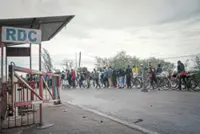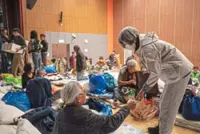Nishizaki holding an image of a bridge from 100 years ago believed to be where the bodies were buried along the Arakawa River. — AFP
Japan marked 100 years early this month since the Great Kanto Earthquake that killed 105,000 people.
Less well known is the subsequent massacre of thousands of ethnic Koreans that haunts the community to this day.





